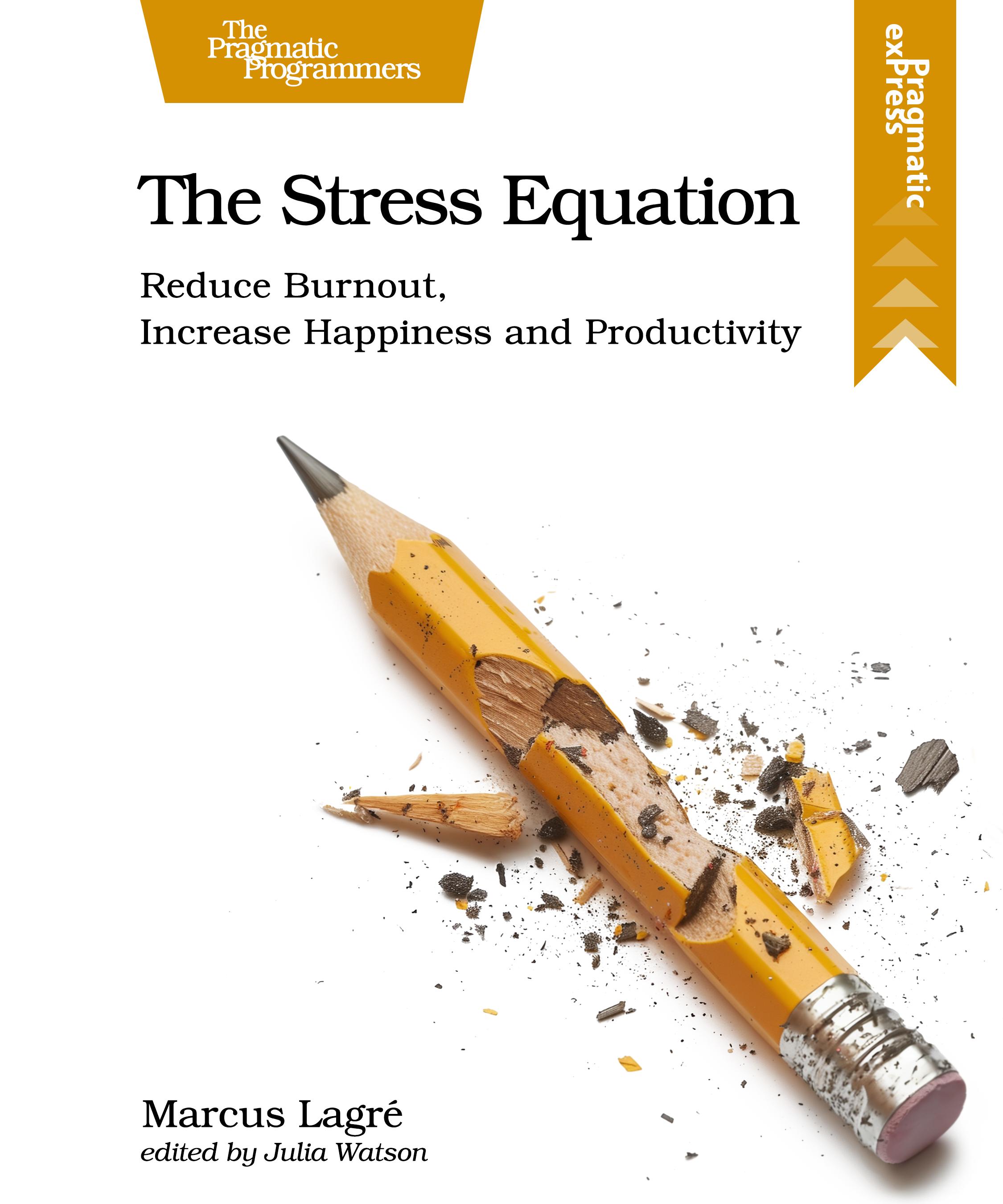The Stress Equation
Reduce Burnout, Increase Happiness and Productivity
by: Marcus Lagré
| Published | 2024-08-13 |
|---|---|
| Internal code | stresseq |
| Print status | In Print |
| Pages | 126 |
| User level | Beginner |
| Keywords | project management, software development, software teams, workplace stress, problem solving |
| Related titles | |
| ISBN | 9798888651018 |
| Other ISBN |
Channel epub: 9798888651179 Channel PDF: 9798888651186 Safari: 9798888651162 |
| BISACs | COM051430BUS019000BUS019000 |
Highlight
Workplace stress is not the weakness of individuals; it’s caused by systemic problems. Armed with the insights in this book, you can identify, analyze, and systematically reduce the factors that lead to poor health, low productivity, and personal burnout. This book gives you a framework for understanding stress, and a vocabulary to make it easier to discuss it among colleagues. Stress can be fixed; find out how.
Description
The interviewer asks, “How well do you cope with stress?” Your response should be, “Let’s fix your environment so we don’t have to.”
Work-related stress is one of the leading causes of mental illness among white-collar workers. It hurts companies, projects, and (most importantly) people! Stress is a burden that’s created when teams stop working well. The Stress Equation is a model and a tool to help talk about stress as a systemic issue. By exploring how pressure, complexity, and security interact in software teams, we move focus away from the individual, so that we can talk about stress from a team and organizational perspective. By exploring external factors, we discuss how to solve problems rather than cope with the consequences. Whether you’re an individual feeling stressed or a manager who can help, you’ll learn the causes of, fixes for, and how to talk about stress. We regulate pressure by how we decide how much work we have to do and when it needs to be finished. Complexity is decided by how we handle our product and organization design. Our security is less about our pay and benefits, and more about the support and trust we feel.
Stress should not be a given. Instead, it’s a symptom of a diseased organization. With this book, you can begin the healing process.
Contents and Extracts
- Preface
- Who Is This Book For?
- How to Read This Book
- What’s in This Book
- Talking About Stress excerpt
- View Stress as an Occupational Health Risk
- Define “Stress”
- Discuss Stress on a Systemic Level
- Wrap Up
- Team Cumulus: Developing Dilemmas
- Meet the Team
- Increase of Pressure
- Identifying Sources of Pressure
- Create a Sense of Urgency
- Structure the Work
- Motivate the Individual
- Wrap Up
- Team Cumulus: Building to a Break
- Team Responsibility
- Increase of Complexity
- Identifying Sources of Complexity
- Understand Your Complexity Debt excerpt
- Reduce Cognitive Load
- Address System Inertia
- Wrap Up
- Team Cumulus: From Clutter to Clarity
- Focus on Flow
- Plan for Mutual Understanding
- Increasing Security excerpt
- Define “Culture”
- Avoid Decreasing Security
- Enable Increase of Security
- Wrap Up
- Using the Stress Equation
- Discuss in Smaller Groups
- Reconvene and Gather Thoughts
- Collaborate in Retrospectives
- Wrap Up
- Collaborating on Product Discovery
- Make It Visual
- Manage the Portfolio
- Discover the Way Forward
- Get It Developed
- Wrap Up
- Increasing Performance, Not Pressure
